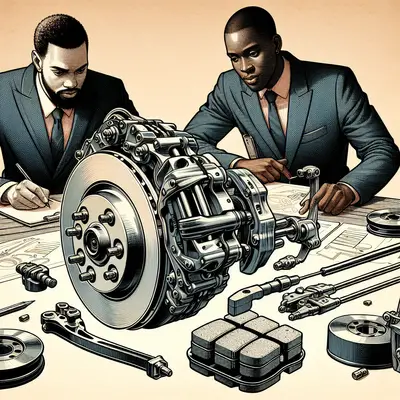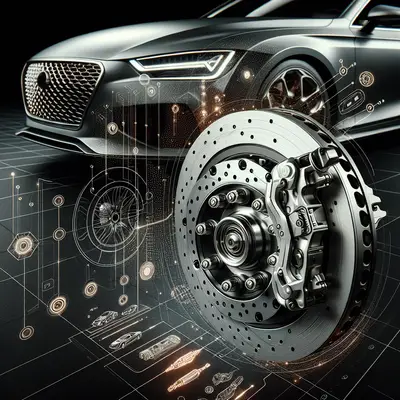The Art of Brake Fluid Maintenance
The brake fluid, often overlooked, is the lifeblood of your brake system. It transfers the force of your foot on the pedal to the brake pads, enabling swift and smooth deceleration. However, brake fluid is hygroscopic, meaning it absorbs moisture over time, leading to reduced performance and potential corrosion. Regular replacement (typically every two years) is essential to maintain peak braking efficacy.
The Nuance of Brake Pad Selection
All brake pads are not created equal. Different materials – ceramic, semi-metallic, or organic – perform differently under varying conditions. Ceramic pads, for example, are known for their durability and quiet operation, but may not perform as well in extreme conditions as their semi-metallic counterparts. The discerning driver should make an informed decision based on driving habits and conditions, prioritizing safety and performance.
The Significance of Rotor Resurfacing
Rotors, the disks that brake pads clamp onto to slow the vehicle, can warp or wear unevenly over time. Resurfacing, or machining, can ensure a smooth, flat surface for the brake pads to grip, contributing to optimal stopping power. However, too much machining can thin the rotor, diminishing its heat dissipation capacity and compromising safety. The delicate balance of maintenance and replacement is key.
The Balance of Brake Bias
In an optimal braking scenario, all wheels should decelerate at the same rate, resulting in a balanced, controlled stop. However, weight transfer under deceleration can disrupt this balance, leading to potential instability. A well-adjusted brake bias, distributing brake force appropriately between the front and rear wheels, can enhance stability and control during braking.
The Importance of Regular Inspection
Finally, regular brake system inspections are vital in maintaining peak performance and safety. These checks can help identify early signs of wear or damage, allowing for timely repairs or replacement. An annual brake inspection is generally recommended, although more frequent checks may be needed for high-mileage drivers or those who frequently drive in demanding conditions.
Conclusion
In the world of premium motoring, understanding the finer points of your vehicle's brake system is both a privilege and a responsibility. By appreciating these five insights, the sophisticated driver can elevate their driving experience, ensuring not only the performance of their vehicle but also the safety of their journey. This is the art and science of precision braking, a testament to the harmony between man and machine.



